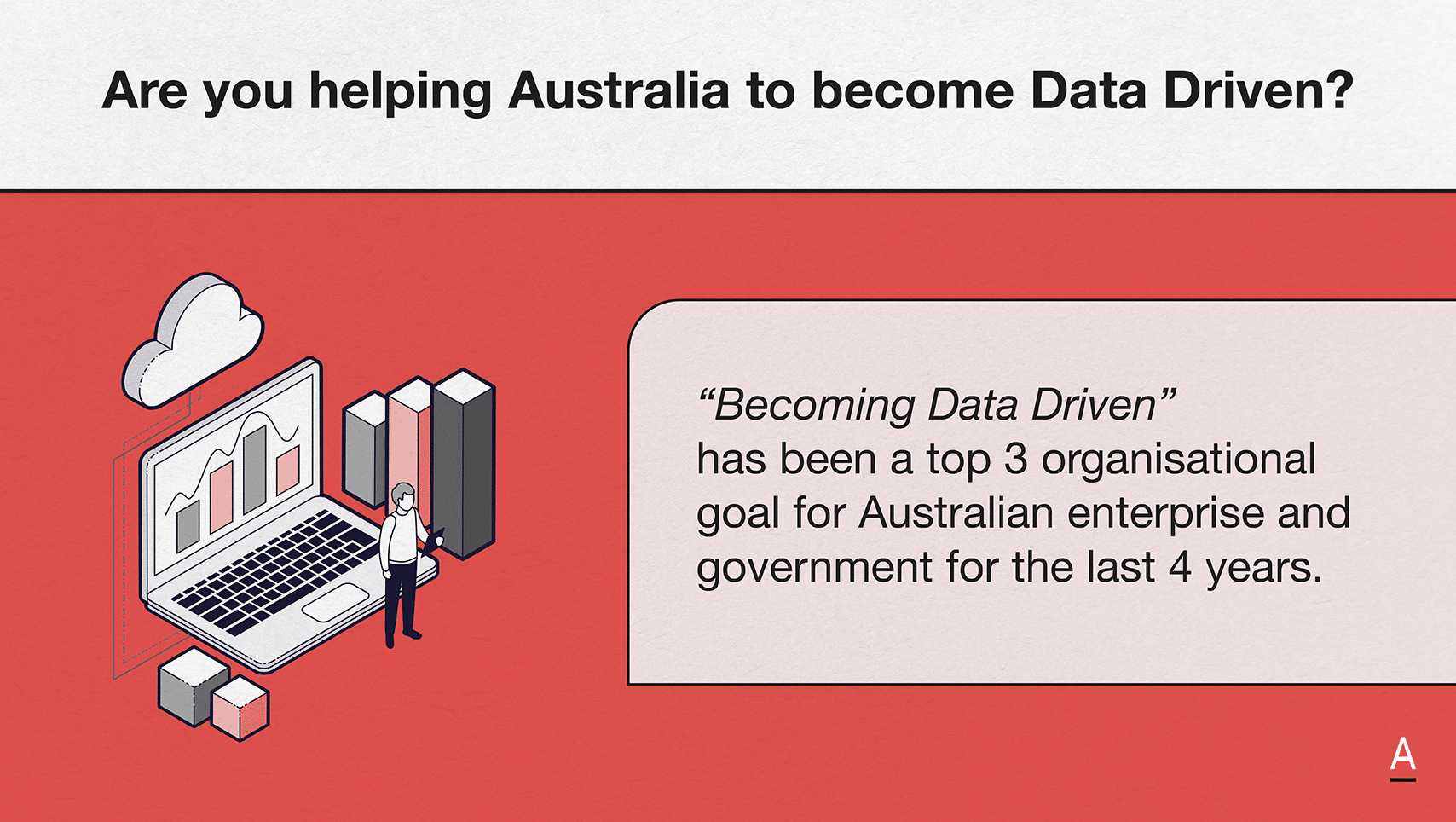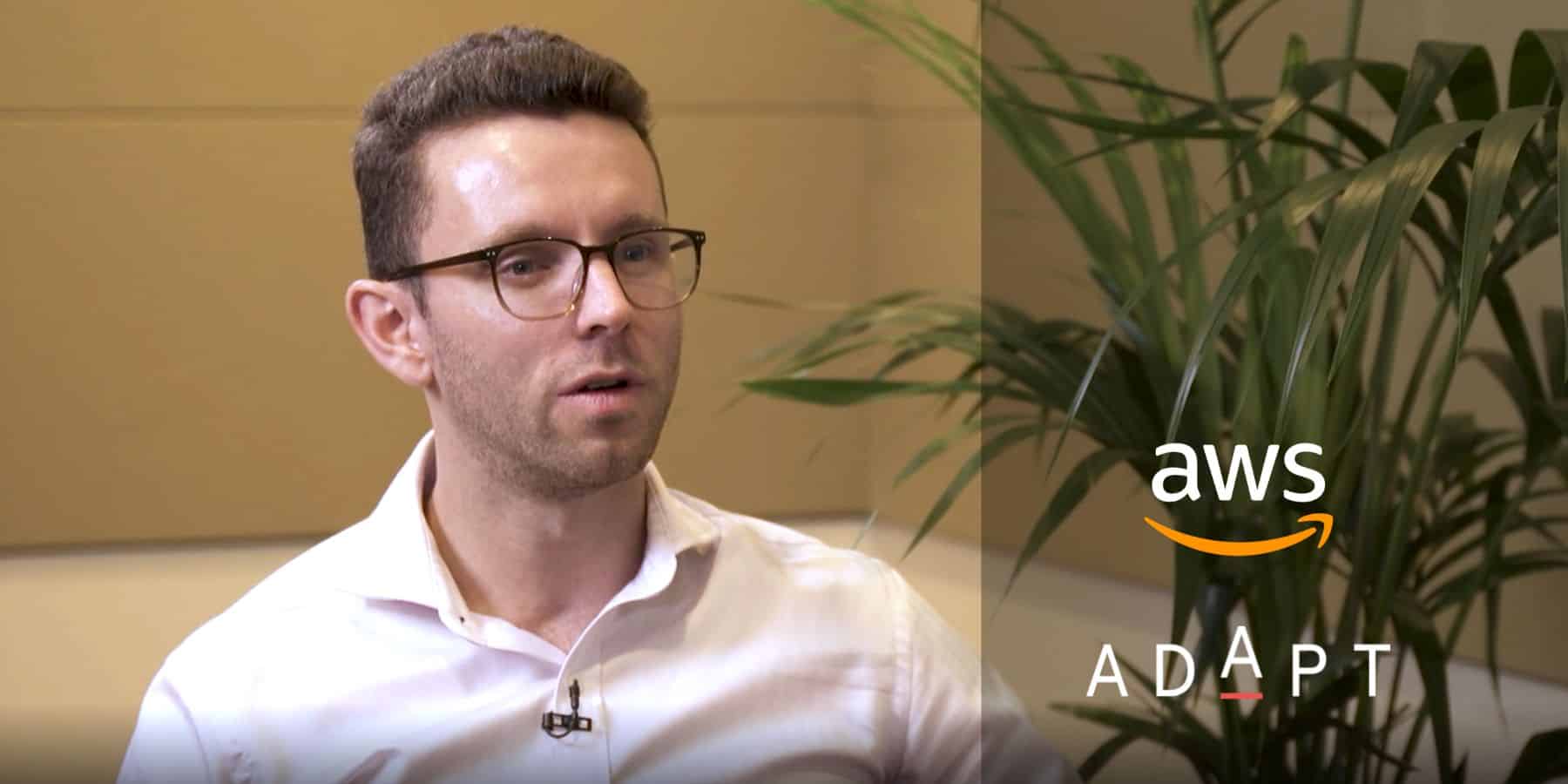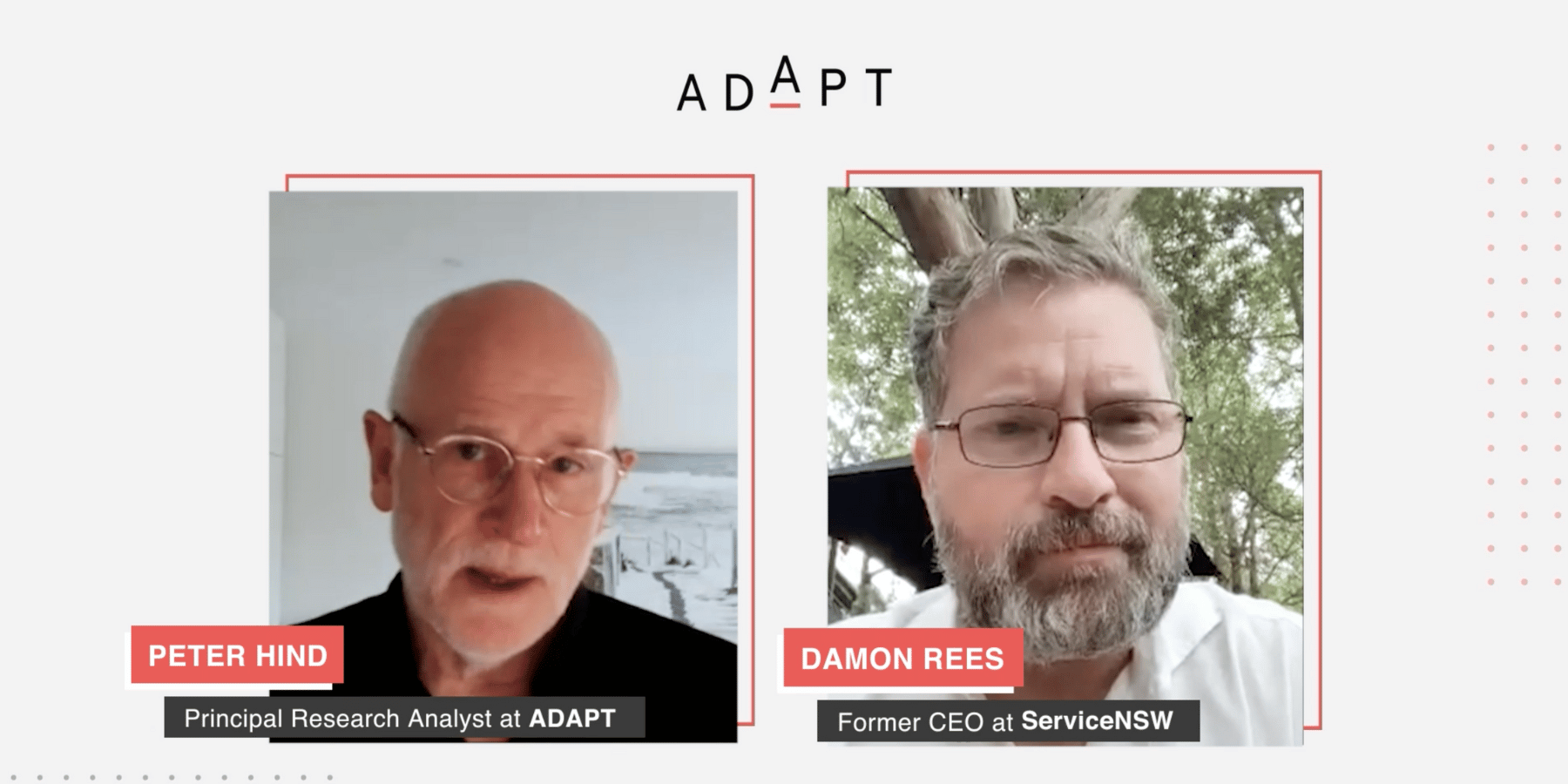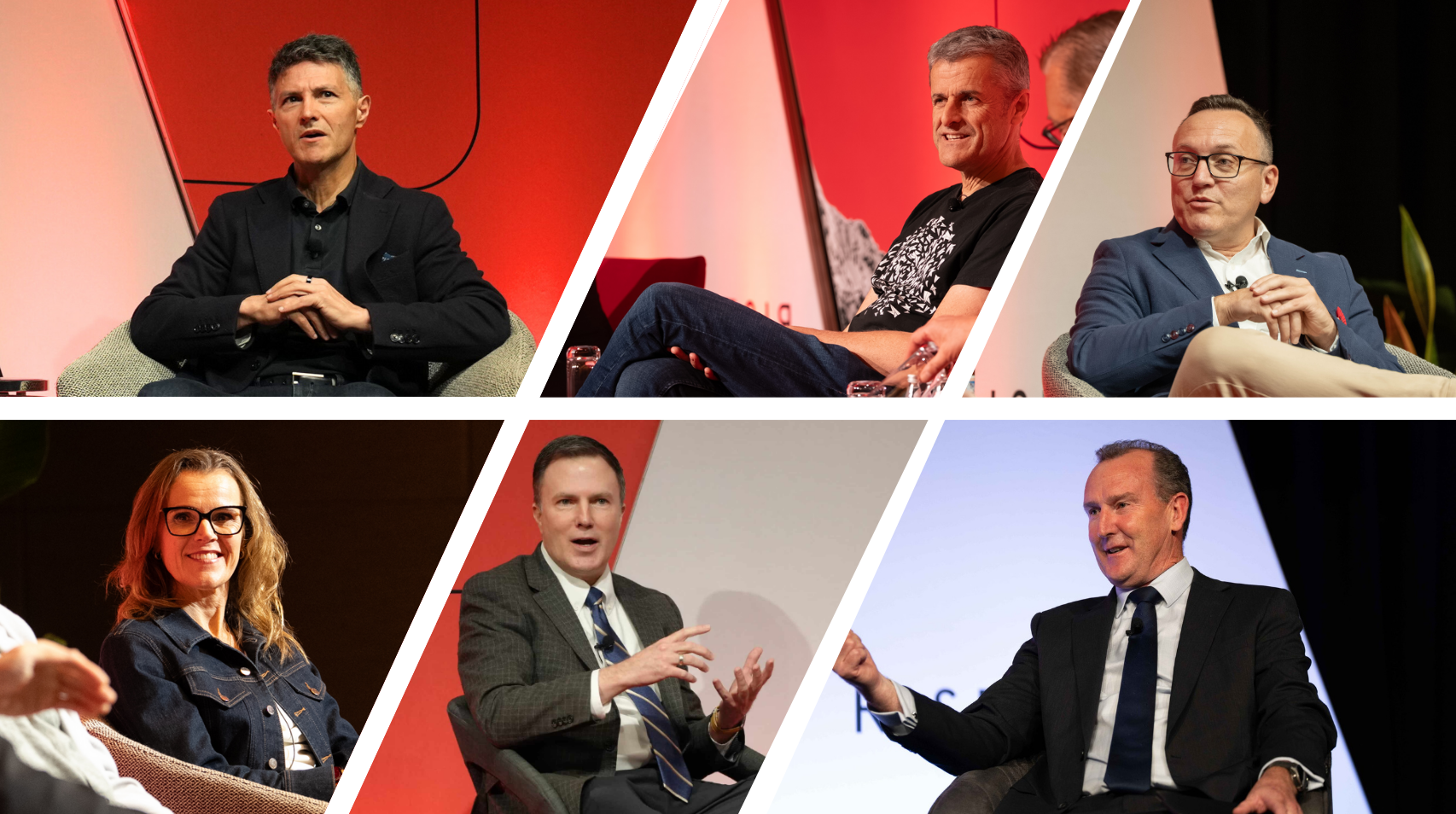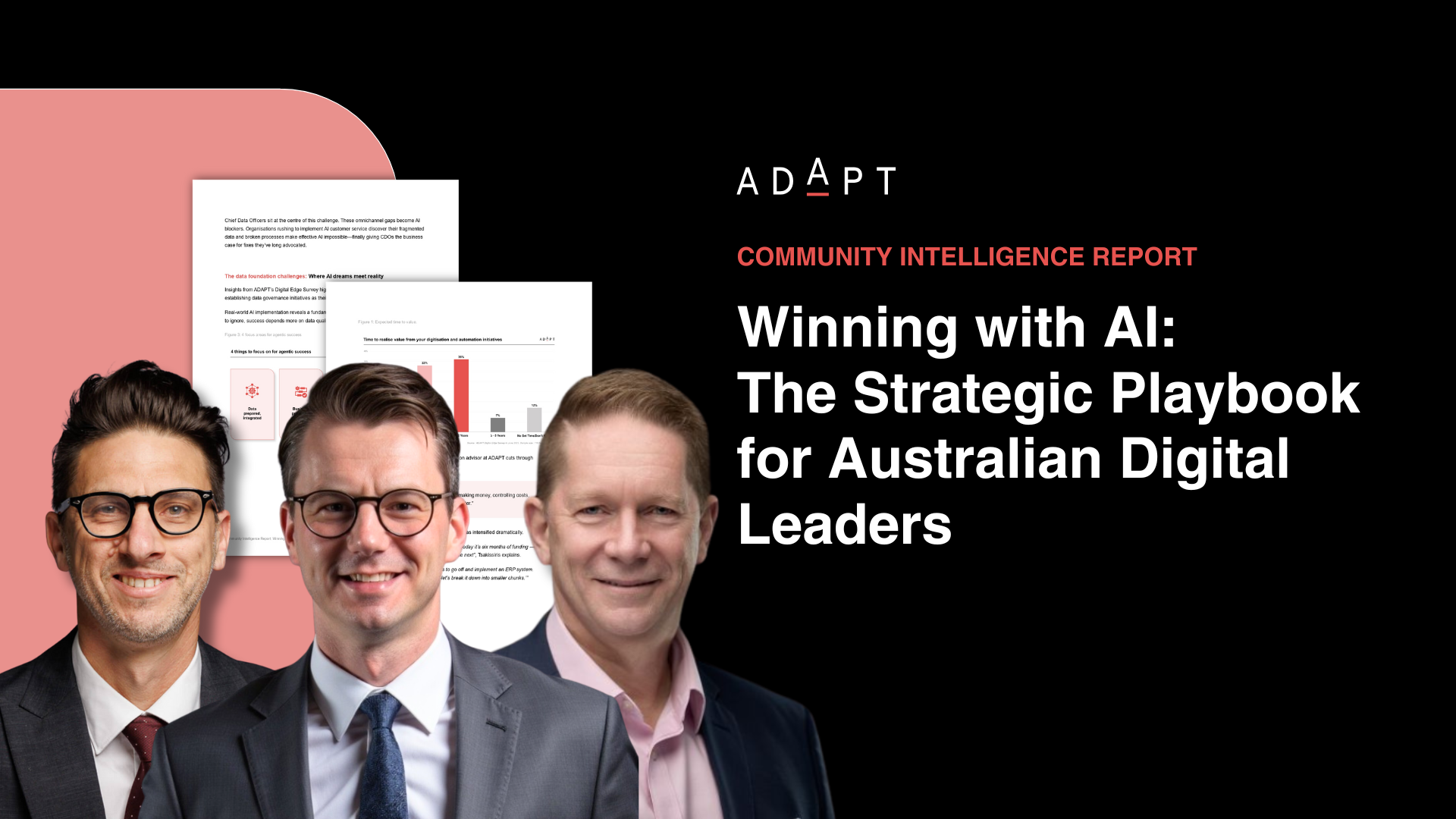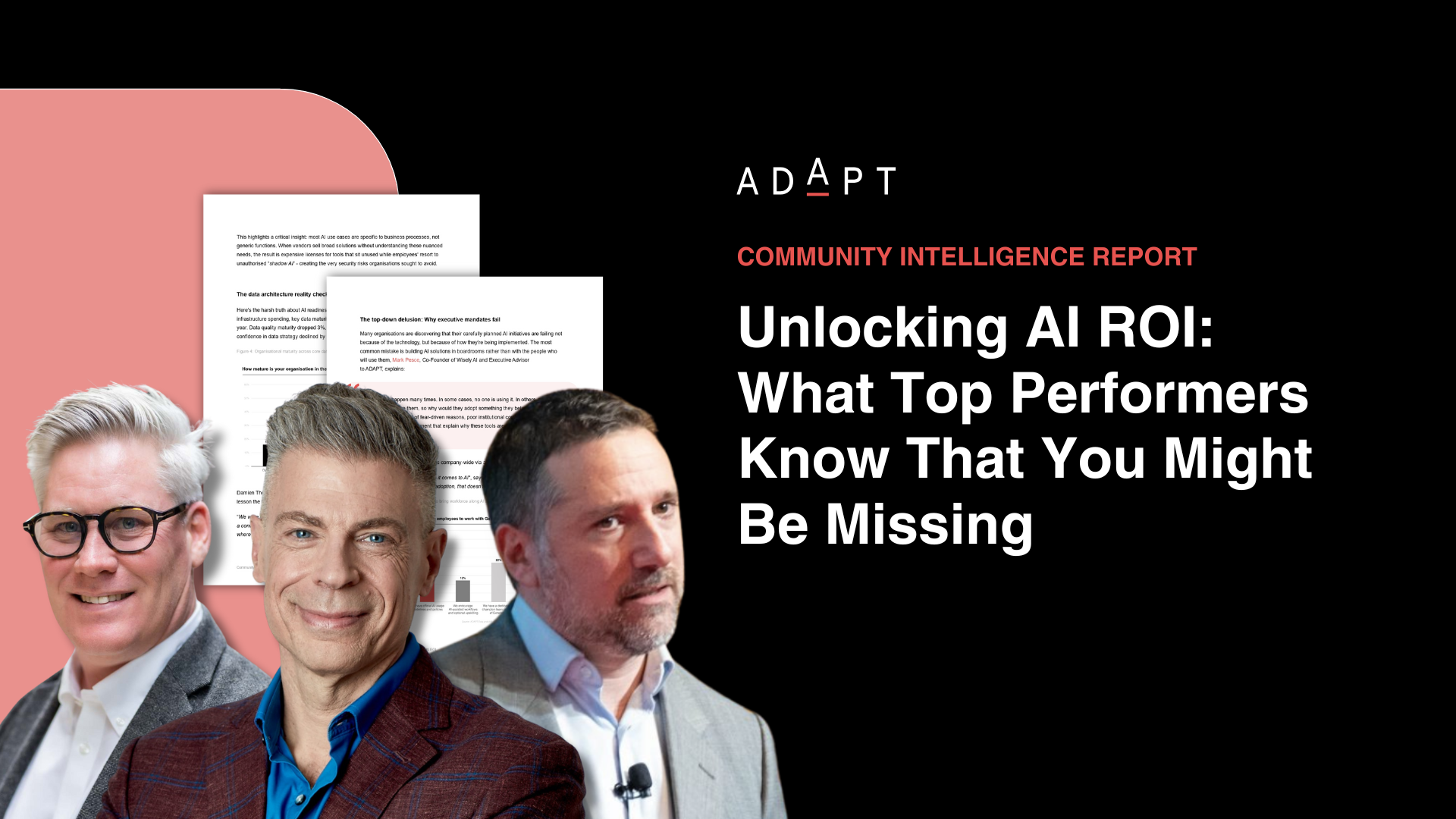AI is displacing Australia’s entry-level jobs, leaving women and young workers most exposed
AI is creating algorithmic workers that threaten frontline and entry-level roles, putting women and young Australians at greatest risk unless leaders act.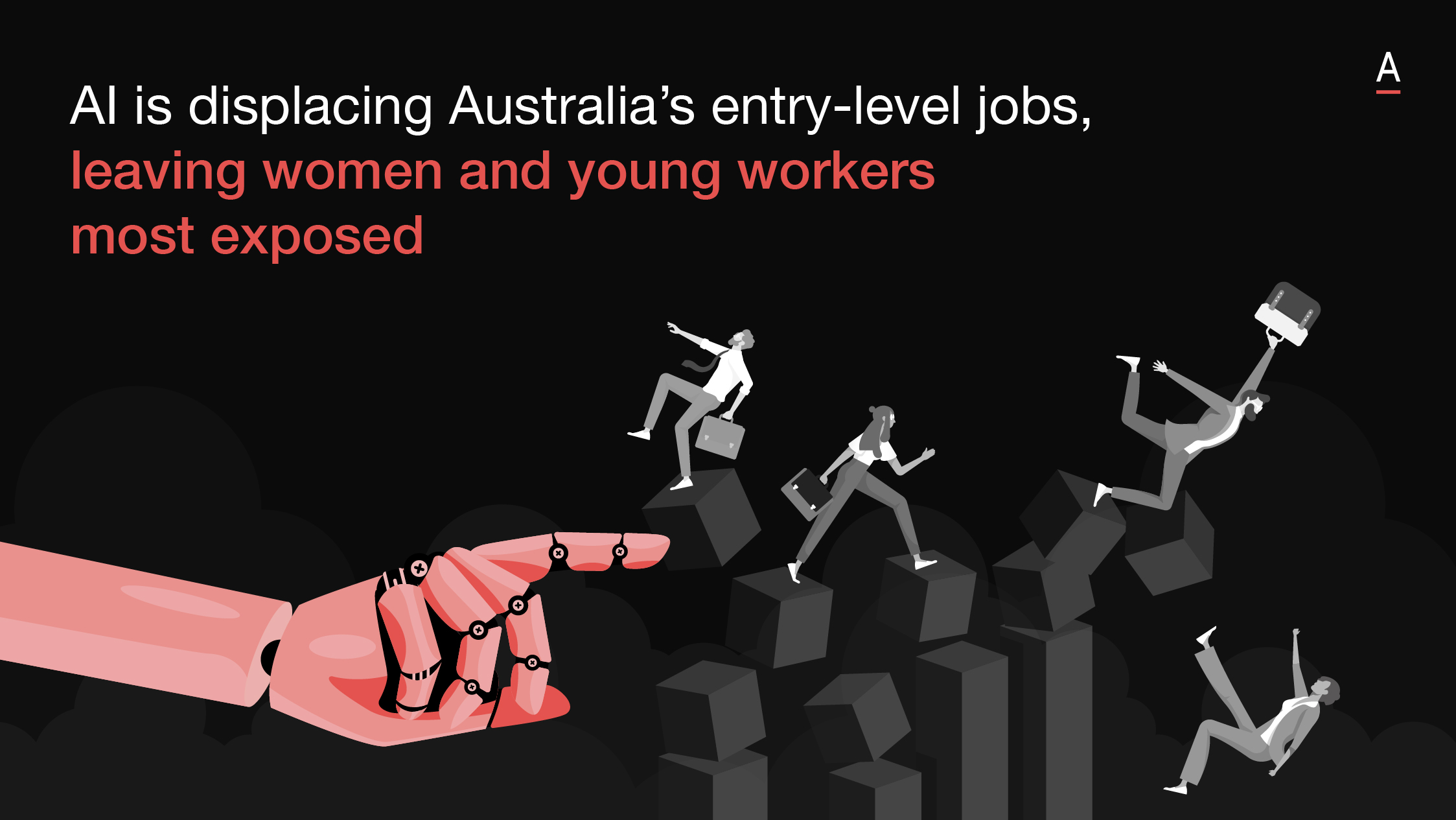
We are watching algorithms step in as workers, and they’re replacing the roles that women and young Australians have always relied on to get their start. If leaders don’t step up, this risk only gets worse.
ADAPT research shows Australian enterprises now invest an average of $28 million annually in AI, so the impact isn’t theoretical, it’s already business as usual.
Generative AI is racing through workplaces everywhere, but the fallout isn’t shared equally.
It’s pulling back the curtain on weak points in how different groups enter and move through the job market.
Companies are ambitious and spending big, but the people most exposed, women and young workers, are still the least supported.
If business and government don’t act with intent, our future workforce will end up more unequal, less resilient, and harder to sustain.
Globally, the same picture is reflected: AI isn’t neutral, it’s amplifying inequality
The world is already telling us this, generative AI is not a neutral disruptor.
The UN has found that women’s jobs are more exposed to automation than men’s, with clerical and administrative roles facing the highest risk.
And these aren’t niche roles, they’re the doorway many women and young people use to enter the workforce.
If those doorways shut and we don’t invest in reskilling or policy, fewer women will get the chance to join, stay, or progress through the workforce.
UNICEF has raised the same red flag for young people.
Their 2025 Time to Act report, based on feedback from over 53,000 young people in 184 countries, shows how entry-level pathways are eroding fast.
The kind of tasks that used to define junior jobs: report prep, customer inquiries are now easily replicated by generative systems.
For young workers, that means the first rungs on the career ladder are disappearing.
The people already on the margins are carrying the heaviest weight.
Women clustered in admin roles and youth chasing first jobs are both at risk of being pushed aside.
These global findings are already showing up here.
If we ignore them, we’ll shrink participation, lose diversity, and watch talent pipelines break down.
Australia is already showing the warning signs
The same global concerns about generative AI are already playing out in our own labour market.
Frontline roles are the first to feel the impact
You see the displacement risk clearest in sectors with big frontline workforces.
At ADAPT’s CFO Edge, Dr Catriona Wallace, Founder of Responsible Metaverse Alliance, said women, minorities, and young people are expected to bear 90% of the 85 million jobs forecast for displacement by AI, with customer service, retail, and administration facing the heaviest exposure.
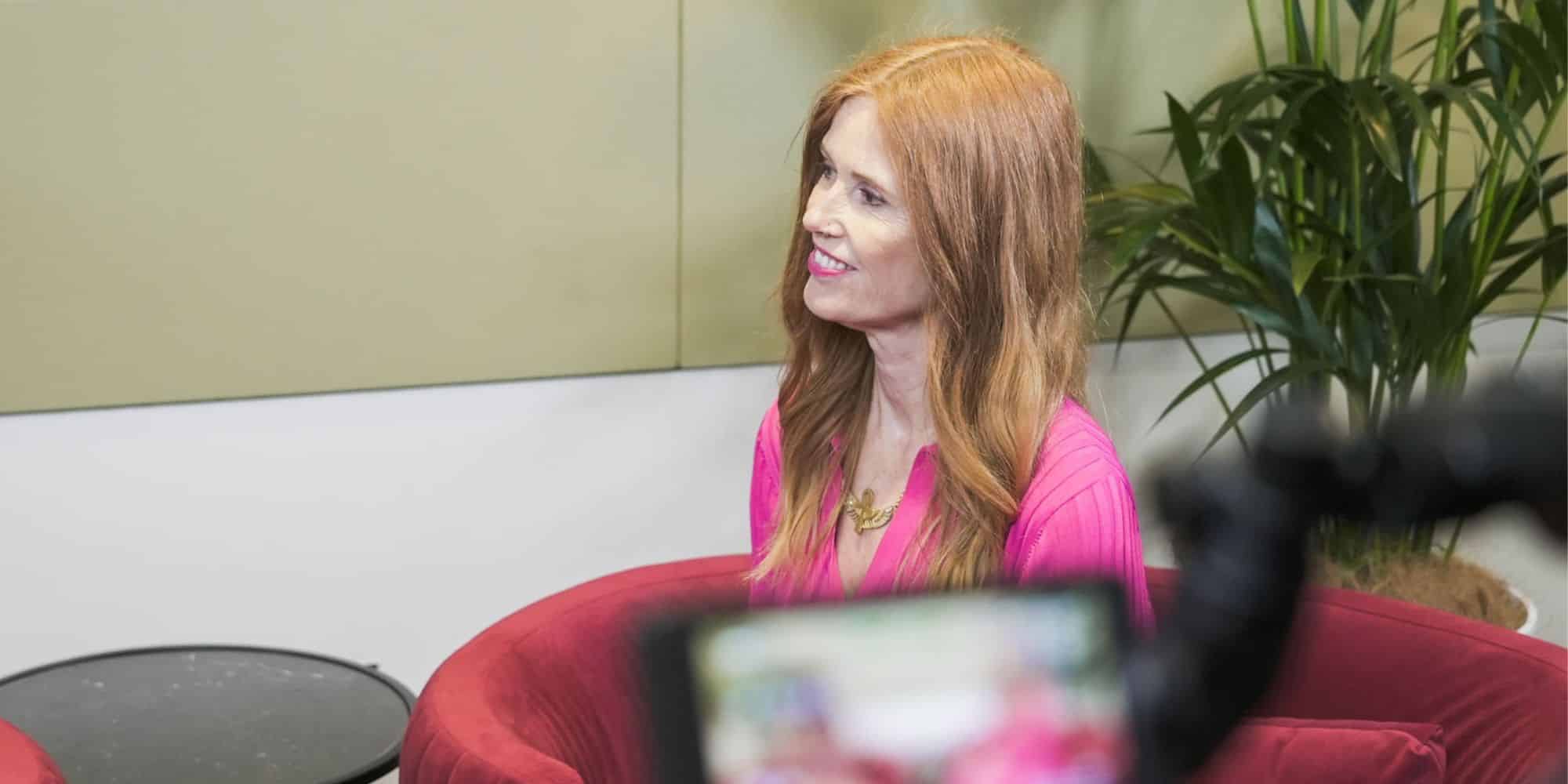
These jobs have always been stepping stones into the wider workforce.
If they disappear, we don’t just lose job security, we lose the pathways people use to move forward.
Leaders need to see this as more than an efficiency play.
It’s a structural risk to workforce participation and threatens to hollow out the entry points that keep organisations inclusive.
Bias starts right at design
Whether AI is fair or not comes down to who’s at the table building it.
Susan Gibson, Head of Data Analytics & AI at the University of Technology Sydney, has argued that when women are absent from AI design and governance, exclusion becomes baked into the systems themselves.
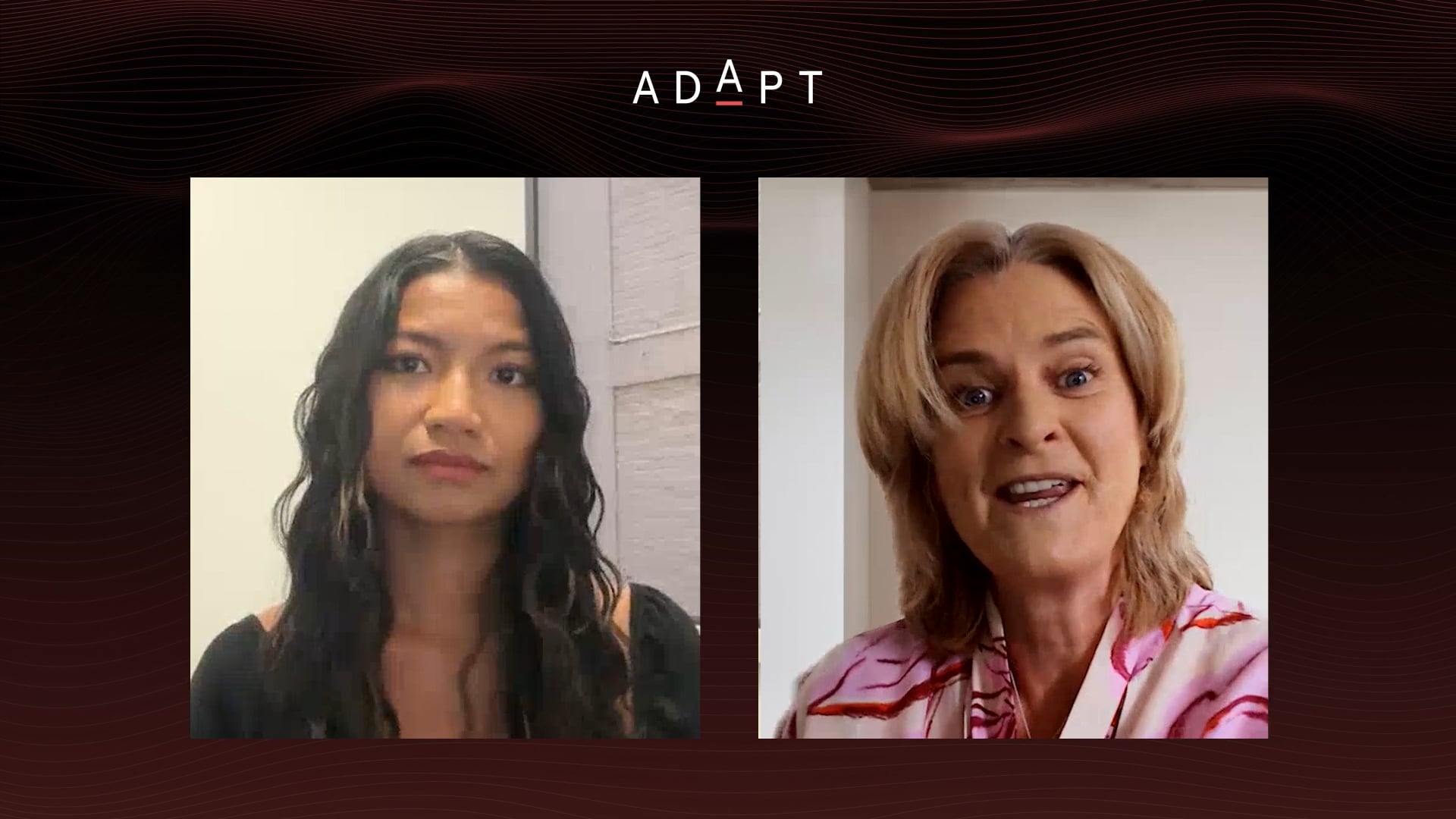
The problem starts at the foundation, well before tools are even rolled out.
For executives, the takeaway is clear: you only stop inequity at scale if your design teams are genuinely diverse.
Financial algorithms are already doing damage
This isn’t a future scenario.
Edward Santow, Co-Founder & Director – Policy & Governance at the University of Technology Sydney, has pointed to biased algorithms already disadvantageous to women in loan approvals and recruitment processes.
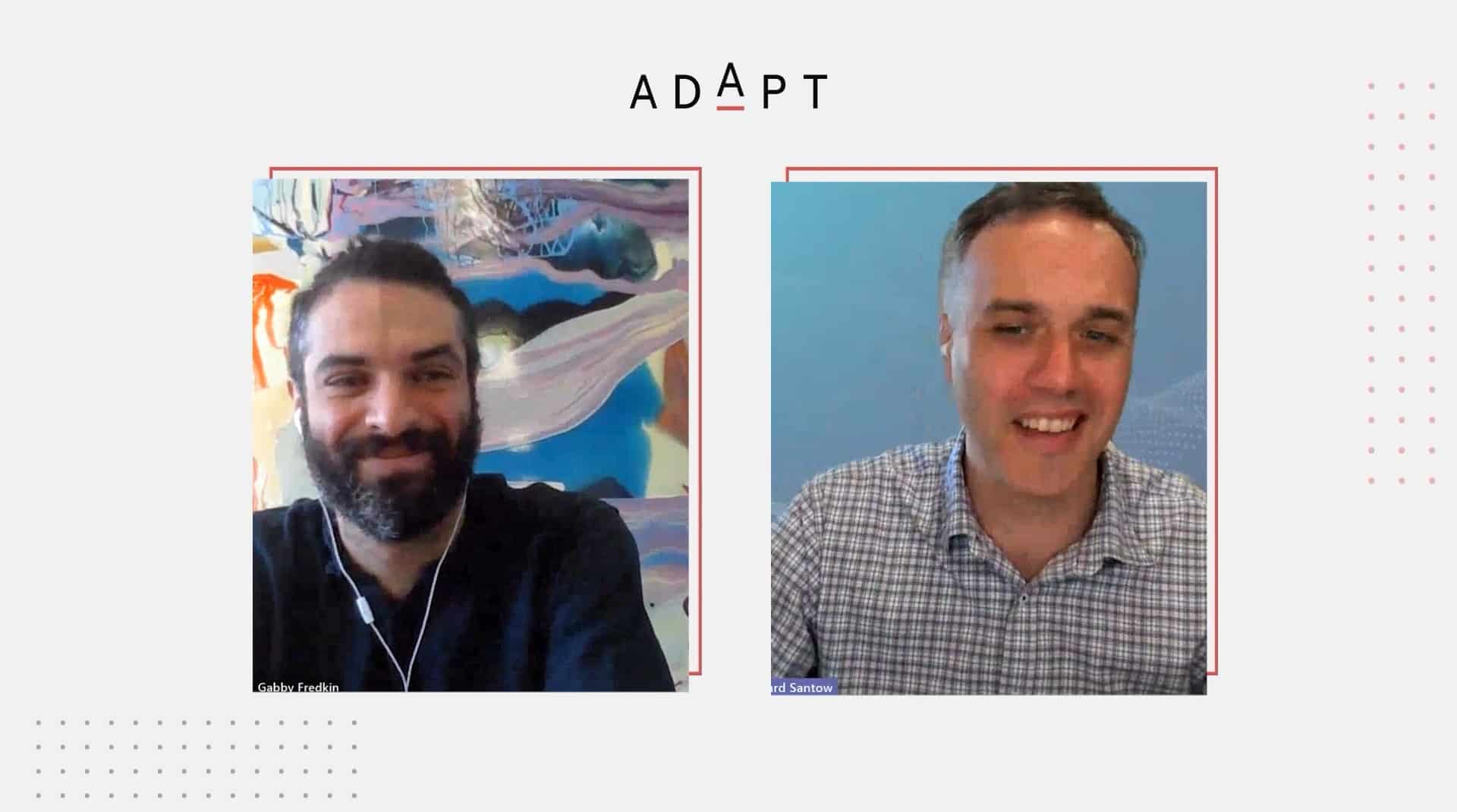
These are live harms that undermine fair access to finance and jobs.
Leaders can’t sit back and treat bias as something regulators will eventually clean up.
Fairness and oversight need to be built into governance right now if trust in these systems is going to last.
Skills are the new dividing line
The disruption is also happening inside companies right now.
Artak Amirbekyan, Chief Data Officer at EBOS Group, has described the shift as one where people with AI skills are replacing those without.

The competition is both humans vs machines and employees who can work with AI vs those who can’t.
That makes training and adaptability a business-critical responsibility.
Without it, inequality deepens inside organisations and talent pipelines break as capable workers get left behind.
Graduates are losing their first foothold
Janet Ravin, VP of Global Brand, Content and Communications at Rimini Street, has warned that many graduates are now struggling to secure entry-level positions in what she describes as the “Tinder era” of job hunting.
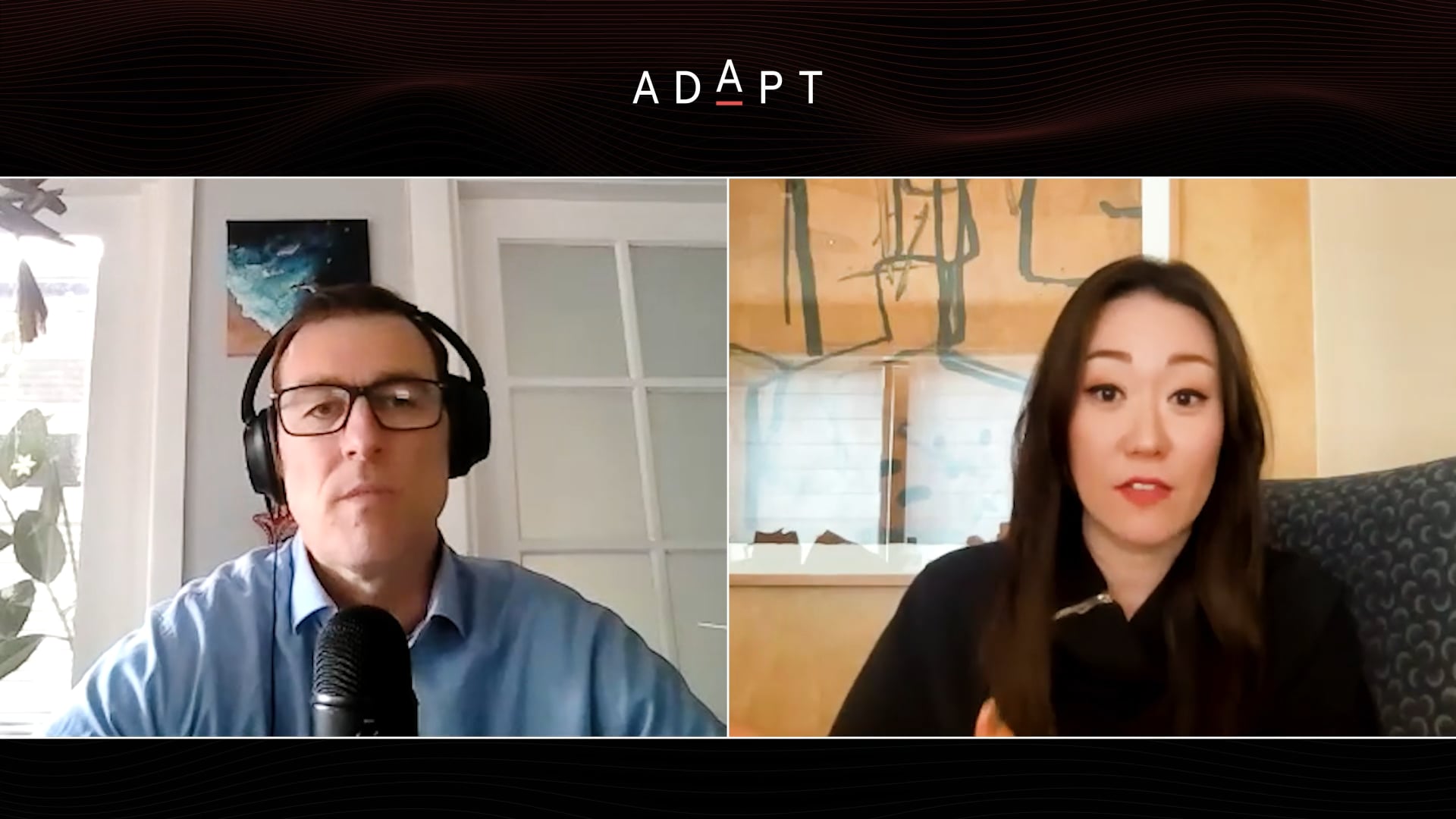
AI-written résumés are being screened out by AI-driven recruitment tools, leaving young people unable to even get that first career-building experience.
In Australia, where graduate pathways are already tight, this is a looming crisis: the roles meant to bring the next generation in are disappearing or blocked by the very technologies causing the disruption.
The risk is worse because Australia isn’t prepared.
Only 6% of organisations mandate enterprise-wide AI training, according to ADAPT’s 2025 research, leaving most workers, especially those in vulnerable groups, without the skills to adapt.
White collar work is no longer safe from disruption
White-collar roles were once viewed as insulated from automation, but recent cases show that generative AI is already transforming professional domains at speed and scale.
Finance functions show how fast jobs can disappear
At ADAPT’s CFO Edge, Oracle and former NRI leaders described how finance automation halved accounts payable headcount in just 24 hours.
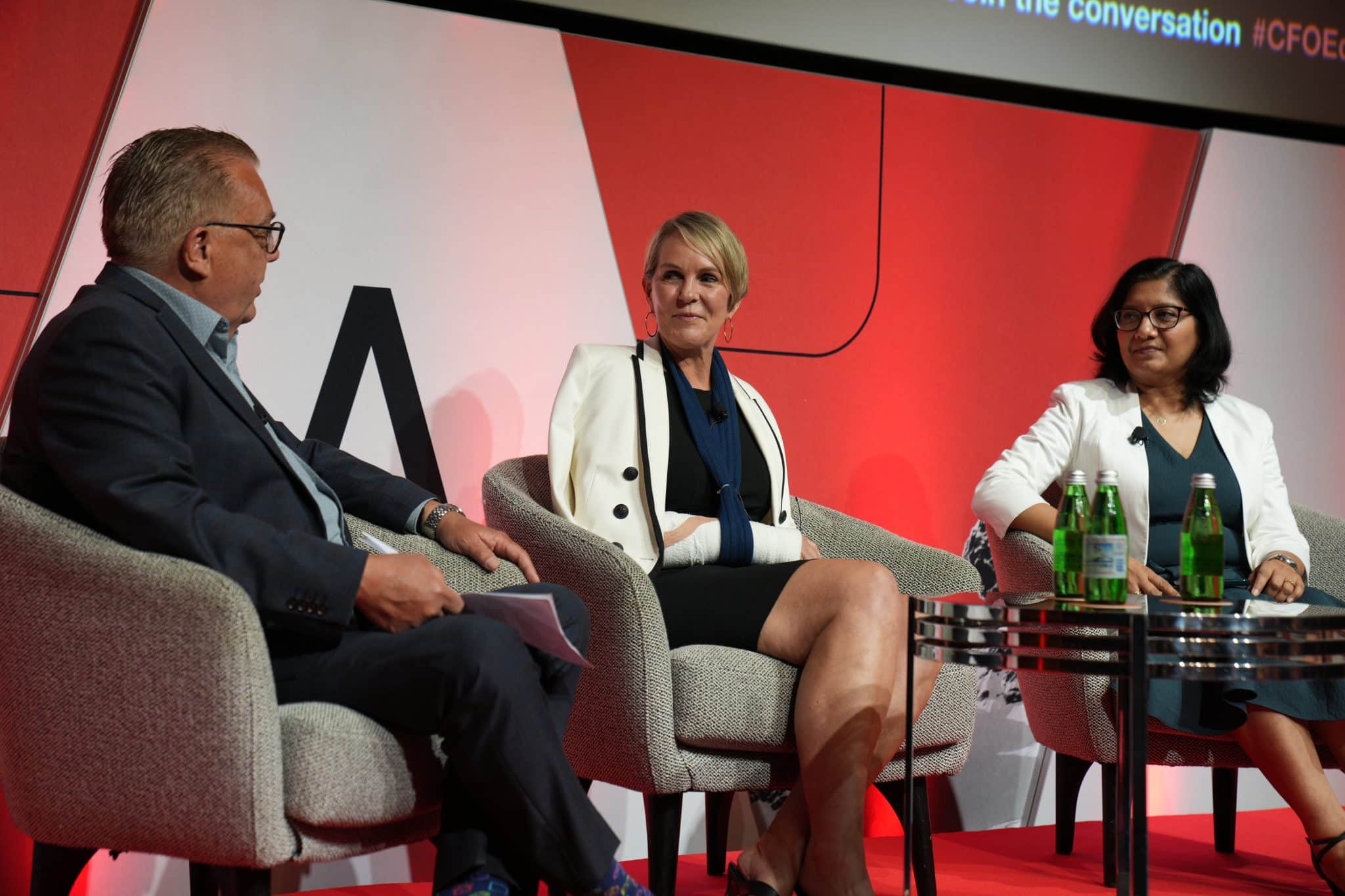
Whole processes spread across teams disappeared almost overnight.
The lesson is clear: disruption can wipe out entire layers of work overnight.
Algorithmic agents are changing the game
Professor Marek Kowalkiewicz, Chair in Digital Economy at QUT Business School, has described autonomous AI agents as “digital minions” — systems that execute tasks, interact with one another, and influence markets.
They’re already buying, solving CAPTCHAs, and handling customer interactions.
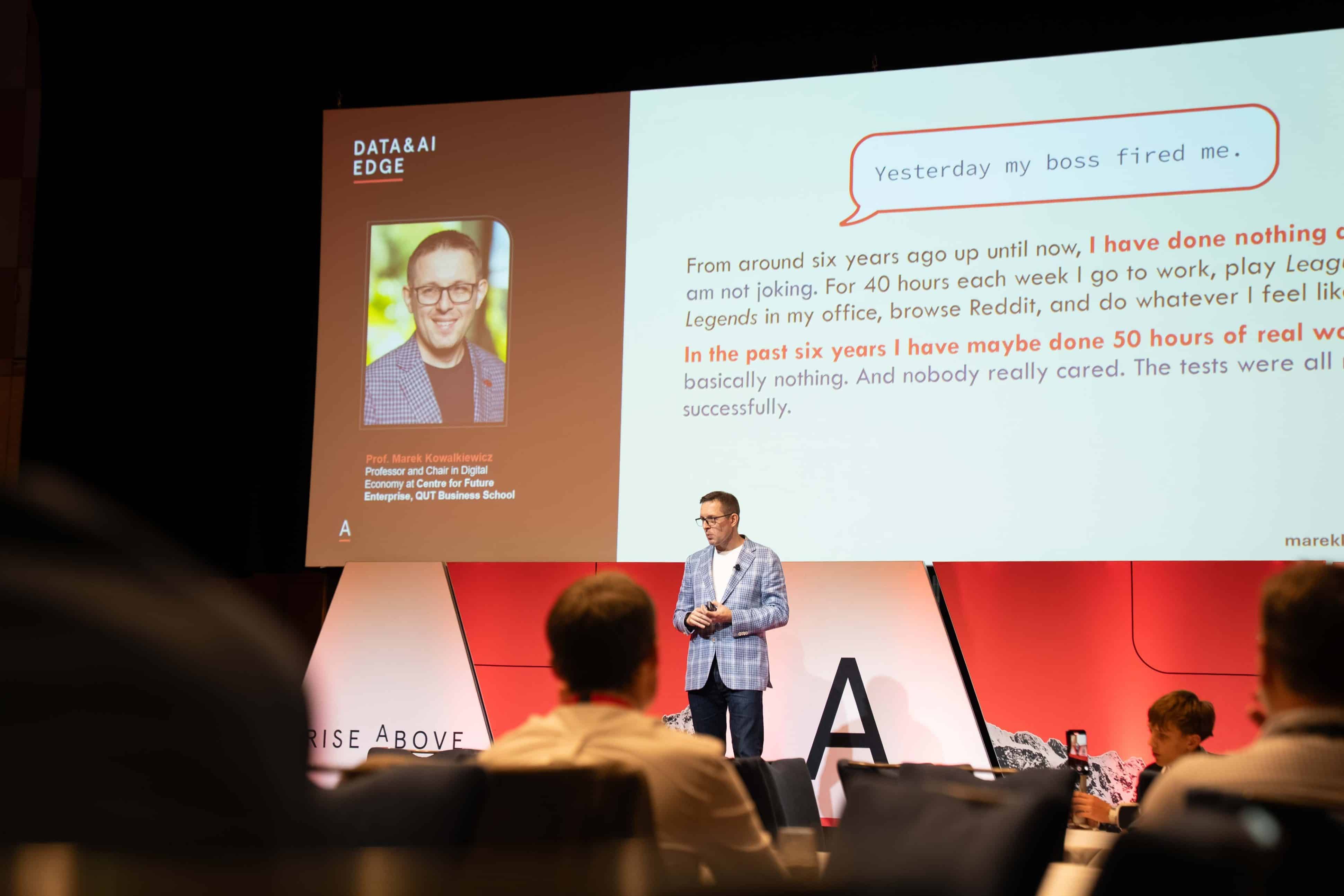
Algorithmic workers are acting like players in the market, and that forces leaders to rethink governance, design, and competition itself.
The leadership challenge is to treat AI as a workforce
Generative AI is a new category of labour.
These algorithmic workers bring power and risk.
Leaders face a choice: deepen inequality or build resilience.
Recognise AI as part of your workforce
Treat it with the same oversight, accountability, and ethics as humans.
Leaders should plan for these systems as part of the workforce, with the same expectations of oversight, ethics, and integration that apply to human employees.
ADAPT research shows that executives often stall by chasing abstract readiness rather than acting on real business needs.
The same mindset applies here: treating AI as an add-on technology delays progress, while treating it as part of the workforce creates the momentum needed to capture value.
Invest in reskilling for women and youth, or risk shrinking future pipelines
Displacement is falling hardest on women in administrative functions and young people in entry-level jobs.
Without targeted reskilling, these groups will lose pathways into the labour market and future leadership pipelines will shrink.
Investment in gender-responsive and youth-focused training is required to align AI adoption with workforce equity.
Govern adoption with fairness, diversity, and accountability so trust is protected
Algorithmic labour reflects the biases present in its design.
If left unchecked, those biases spread through hiring, promotions, and financial decisions.
Executives should embed fairness, accountability, and diverse representation into governance frameworks to protect trust and ensure AI strengthens rather than weakens organisational integrity.
Building an equitable, AI-powered workforce
Generative AI is spreading through every sector, and the greatest disruption is falling on women and young workers.
Where this goes depends on leadership decisions today.
Recognise AI as labour, invest in reskilling, embed fairness into governance.
These steps expand participation, protect pipelines, and strengthen resilience.
Delay or neglect hardens inequities and weakens organisations.
Acting now builds a workforce that’s both tech-powered and inclusive.




